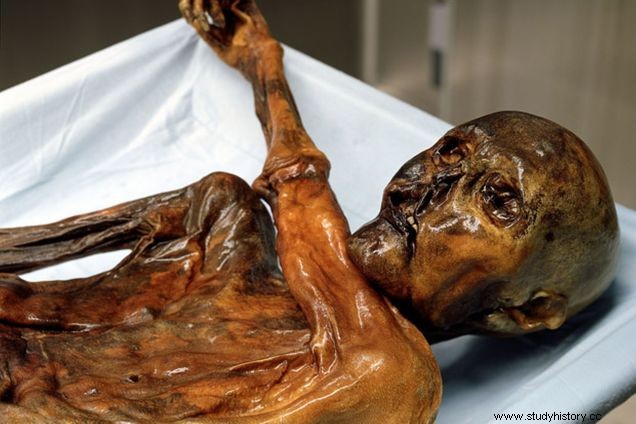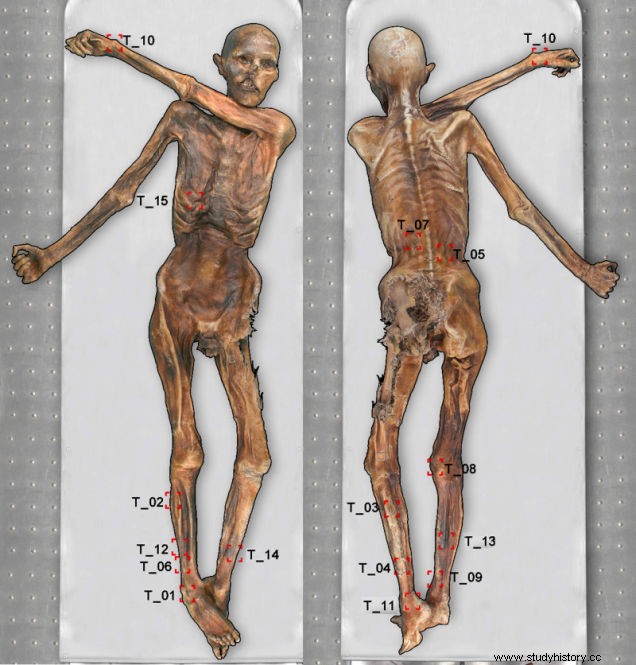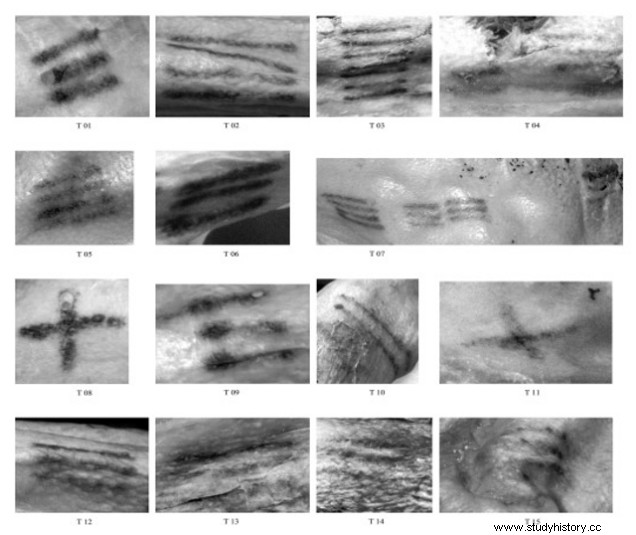
The famous Ötzi the Iceman, discovered in 1991 by German tourists in Ötzal, in the Alps between Austria and Italy, is a natural mummy of a man who lived for back to 5,300 years ago. According to available records, Ötzi's frozen mummy bears the oldest known tattoo records, with 61 identified on his body.
Photos and analysis of electronic images processed through special software allowed the identification of tattoos that could not be identified with the naked eye.

Researchers speculate on hypotheses that explain Ötzi's various tattoos. Initially they suspected that medical and therapeutic procedures could explain the marks, as most of them were in areas on or near joints, but the identification of tattoos on the back also raised other possibilities. It is now argued that prehistoric tattoos could then have had other purposes, including religious ones.
The method for making the tattoos found on the Iceman was the use of cuts over which coals were rubbed.

